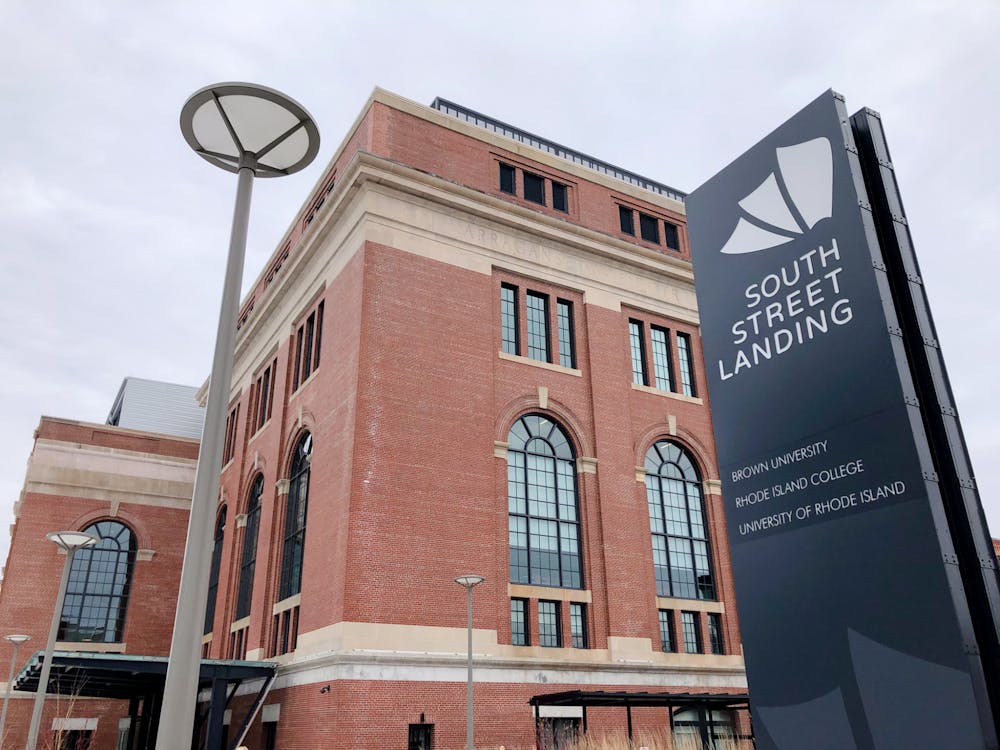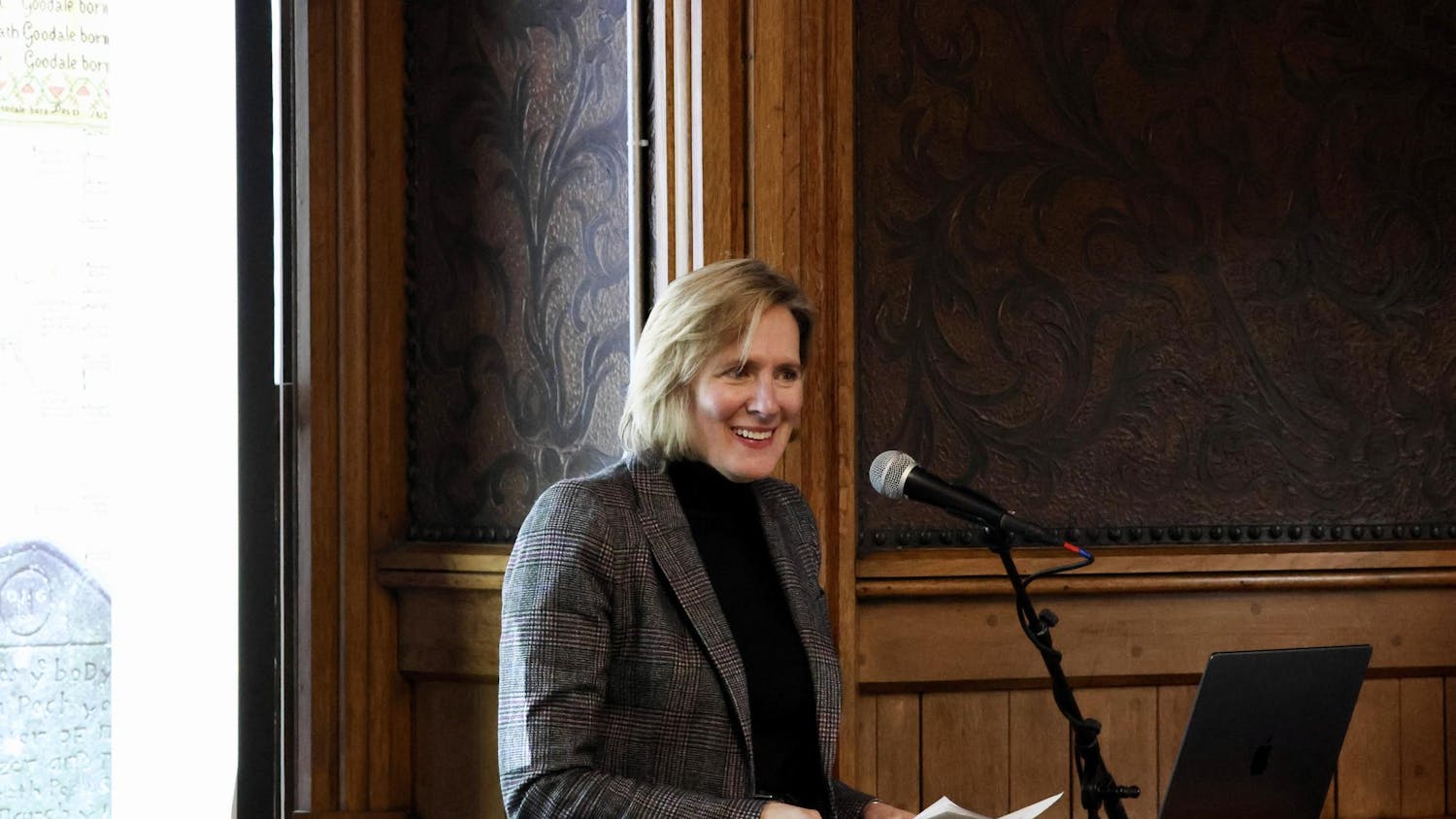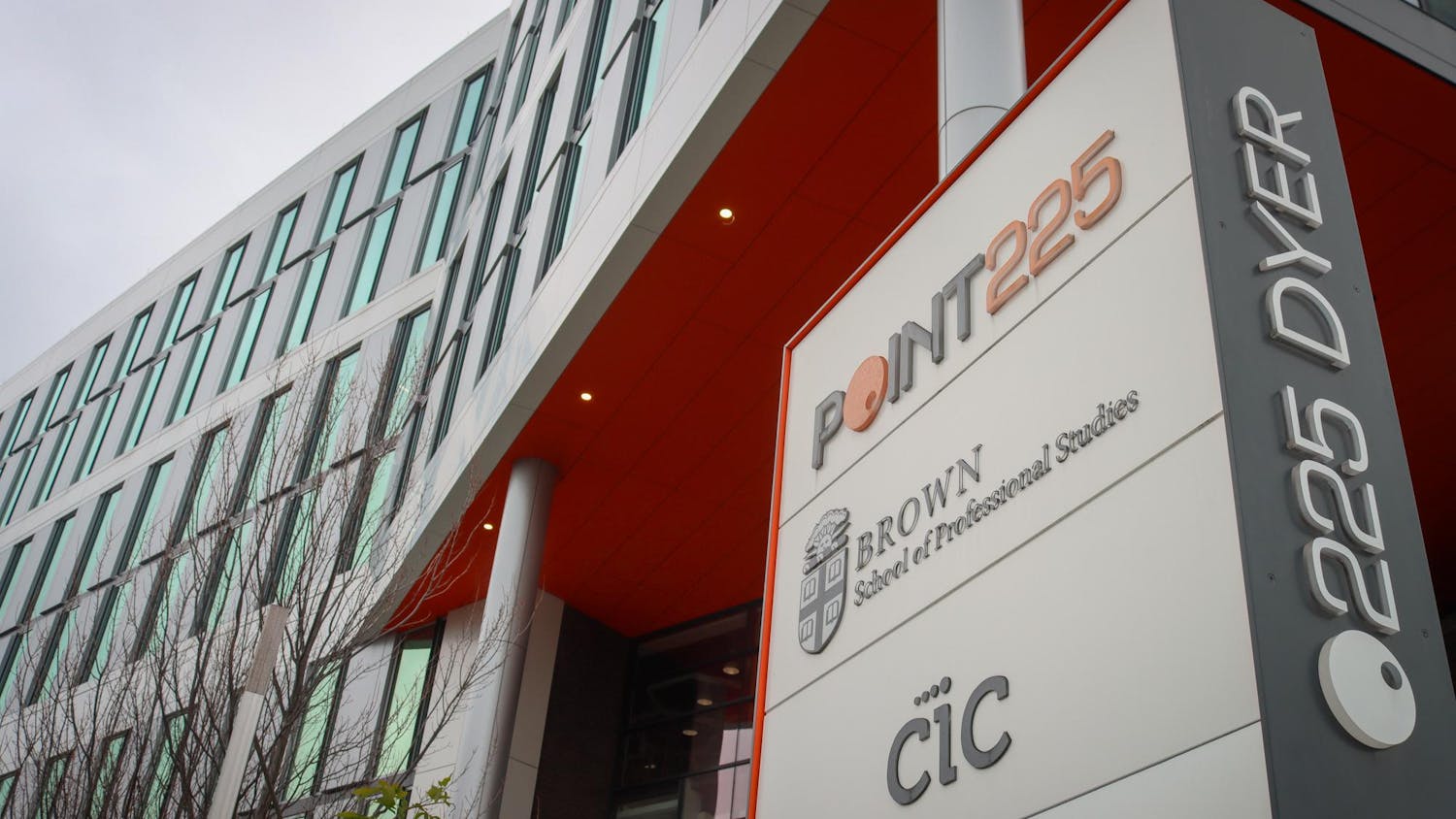The recipients of the 2022 Office of the Vice President for Research Seed Awards were announced last month. These funds are designed to help “faculty be more competitive for external grants, from federal funding agencies or foundations,” Vice President for Research Jill Pipher wrote in an email to The Herald.
The process of applying for funding from outside organizations like the National Science Foundation or the National Institutes of Health is competitive and requires scientists to include preliminary data, established collaborations with other researchers or other progress towards their goals in their applications, Pipher wrote. “These Seed awards are designed to help faculty address all these points, by paying for supplies or computing, supporting graduate students or postdocs who are working on the project or (funding) essential travel for field work.”
Analysis by the Research Strategy and Development Office in the OVPR shows that “on average, $1 of Seed award catalyzed $14 in external funding to Brown,” Pipher said.
There are two categories of awards, Category 1 and Category 2. Category 1 awards offer up to $50,000 for a project led by a single principle investigator, while Category 2 awards offer up to $100,000 for proposals led by a group of two or more PIs from distinctly different disciplines. Earmarking the larger awards for “these new team-oriented approaches to big research problems” allows Seed awards to “catalyze new collaborations, especially cross-disciplinary collaborations that are really challenging to get started,” Pipher wrote.
Any faculty member who conducts research through Brown is eligible to receive a Research Seed Fund, according to the 2022 OVPR Seed Guidelines. About 25% of submitted proposals get funded, Pipher wrote. “Winning projects must meet all the qualifications: impact, ability to complete in an appropriate time frame, likelihood of enhancing the means of attracting external funding and for the larger grants, the generation of new cross-disciplinary collaborations.”
The proposals are reviewed by “faculty peers whose advice is an essential component in the final decision,” she added.
The Seed awards are divided into four subject areas: physical sciences, which include 10 recipients in 2022; life and medical sciences, which included seven; life, medical and physical sciences, which included two; and public health, which included two. The Herald spoke with award recipients from each category of subject area about their research and how this new funding will impact it.
Physical Sciences
Jesse Ault, assistant professor of engineering, won a Seed award in the physical science category for his project that focuses on “developing a technique for ablating molecules from a water surface using a high-powered laser,” he wrote in an email to The Herald.
This type of process is already used to identify chemical substances called analytes in a technique called mass spectrometry. “We think that the use of a water surface instead of what is called a solid ‘matrix’ to hold the target analyte molecules may improve several issues over the current technique,” such as analyte compatibility, Ault wrote.
He hopes to use the Seed funding to generate preliminary data to “strengthen the case for future proposals,” he wrote.
Life and Medical Sciences
Alexander Jaworski, associate professor of brain science, and Ahmed Abdelfattah, assistant professor of brain science, are 2022 Seed awardees for their life and medical sciences project, which studies how “neurons are steered to their targets during embryonic development,” Jaworski said.
During development, neural circuits “need to find each other and connect with the right partners,” Jaworski said. Currently, researchers know that there are molecular cues for the developing axons, or nerve fibers, to instruct them “where to go and where to form connections.” Axons are parts of nerve cells used to transmit electrical signals to other neurons.
But one poorly-understood area is what is actually happening in the “developing axon to then translate these signals into a change in the direction that the axon extends into,” Jaworski said.
Previously, Abdelfattah’s lab developed sensors that allowed researchers to monitor and detect action potentials, or “huge fluctuations in membrane potential,” that occur during neuron signaling. Jaworski and Abdelfattah will use this new Seed funding to make sensors sensitive enough to detect local changes that are much smaller in amplitude than action potentials, Abdelfattah said. Those sensors will allow them to test whether guidance molecules trigger changes in neuron membrane potential in order to control neuronal wiring.
Understanding how “the brain wires itself in the first place, under normal circumstances … might help you understand the etiology of neurodevelopmental diseases,” Jaworski said.
The Seed award is a “really great mechanism for a project like this one, because it is very exploratory … There is some basis to our hypothesis, but it's not developed enough to compete for serious external funding,” he added.
Karla Kaun, associate professor of neuroscience, also received a 2022 Seed award for her life and medical sciences project on developing a “new Drosophila, or fruit fly, model to be able to understand the mechanisms of how opiates affect the brain,” she said.
Though “people have traditionally thought that flies don’t have opioid receptors,” Kaun said, she found that when she gave opiates to flies, they showed “some pretty pronounced behavioral responses.” This finding suggested that flies could be used as an animal model to study opioid use disorder research.
“This is really high-risk, cutting edge research,” Kaun said, since no one has studied opioid receptors in flies yet. So far, preliminary research in her lab has been promising, showing that when flies are injured and left for seven days, “they’re more sensitive to the effects of fentanyl,” a type of opioid, Kaun said.
“Seed funding is really fantastic because it allows us to sort of take these risks that we wouldn't be able to take using federal funding,” she added.
Life, Medical and Physical Sciences
Gang Xiao, professor of physics and engineering, and Jerome Sanes, professor of neuroscience, received a 2022 Seed award for their life, medical and physical sciences project that seeks to optimize magnetoencephalography, a process that monitors brain health.
Currently, most of the commercially available MEG devices operate at very low temperatures, Xiao said. These technologies have to “operate in liquid helium, which (is) four degrees Kelvin,” Sanes added.
Use of liquid helium is very expensive. Because the magnetic brain waves detected by this device are thousands of times weaker than magnetic signals coming from earth’s magnetic field, these devices have to operate in a magnetically shielded room to prevent outside signals from interfering. “The whole setup costs about $5 million,” Sanes said.
Xiao and Sanes will use the Seed funds to develop a device “that would work at ambient temperatures” and would be “low cost and … untethered from any constraints,” such as having to be used in a magnetically shielded room, Sanes said.
Xiao has developed prototypes that work at room temperature and have “onboard electronics right next to the sensor that cancel out the earth’s magnetic field.” These prototypes are already sensitive down to a nanoTesla, but Xiao hopes to use the Seed award to increase the sensitivity by three magnitudes to a picoTesla.
Another advantage of Xiao’s technology is that “you can print these (MEG devices) and then you can mold them into the shape that you want,” Sanes said. “The production cost can go way down and they could be, perhaps, even individuated for each person’s different shape.”
“This is primarily a very high-risk project with potentially huge rewards,” Xiao said. “The OVPR Seed funding really encourages professors to take risks.”
Kimani Toussaint, professor of engineering, also received a life, medical and physical sciences Seed award for his project on optimizing pulse oximetry technology. Pulse oximetry uses “light to estimate the amount of oxygen in your blood,” Toussaint said.
“There is an inherent bias in the way the technology operates, and it produces a lot of false negative readings for people with darker skin,” tattoos or wrinkles, he said.
“It could be that you actually are suffering from a lack of oxygen,” but the “melanin in skin is absorbing the light” of the pulse oximeter, causing the oximeter to calculate a falsely-high oxygen level.
False negative readings may be dangerous, especially during the COVID-19 pandemic. To create more accurate oximeters, Toussaint will use Seed funding to study ways to reduce the confounding effect of skin pigment and texture on these devices.
Public Health
Hamish Fraser, associate professor of medical science, received Seed funding for his public health project about “the use of diagnostic apps for patients, which are often called symptom checkers, that have really become very popular and widely used over the last five to 10 years,” Fraser said.
Though “tens of millions of people in the U.S. use these apps every year,” this type of technology has “fallen into a kind of gap in regulation,” he said. “We don’t really know if they’re effective, safe, how useful they are and also, critically, whether this type of tool works with different groups of patients.”
This research builds on an earlier study Fraser did with his colleagues about a symptom checker app from a company called AIDA Healthcare, Fraser said. The study looked at “how accurate the diagnosis was, how appropriate the advice on urgency would be for that particular patient’s condition” and how usable the app was, he added.
In a collaboration with Brown Medicine and Ross Hilliard, assistant professor of medicine and clinician educator at the University, Fraser will build on the results of the previous study by looking at the app’s use in a larger set of patients in primary care. With the first part of his Seed funding, Fraser will finish the work of this primary care study by matching app feedback to patient diagnoses.
Stroke, Fraser said, is a critical disease to treat, especially in emergency departments. Though there are now treatments for stroke, “the problem is you have a very short time window,” to treat the condition, he added.
With the second part of his Seed funding, Fraser will use machine learning to analyze the symptom data of patients presenting with stroke in an effort to improve the diagnostic capabilities of symptom checkers in detecting the disease.
Stroke symptoms vary widely, so “a symptom checker is actually a pretty good tool for that, because strange combinations of symptoms are just the kind of thing that a computer is good at picking up,” he said.
Carolina Hass-Koffler, associate professor of psychiatry and human behavior and behavioral and social sciences, also received a Seed award for her public health project on the usage of MDMA, a psychoactive drug, for improving psychotherapy among patients with a comorbidity of alcohol use disorder and post-traumatic stress disorder.
MDMA allows individuals who enter psychotherapy to “go through a mental process where they can try to mitigate distressing trauma-related symptoms,” Hass-Koffler said.
MDMA is particularly relevant for veterans, who often avoid psychiatric settings, she said. With MDMA, the researchers hope to create an environment that is “disentangled by painful emotion” so veterans are “able to talk about their traumatic experiences.”
In a previous study, Hass-Koffler saw that MDMA allowed patients the ability to “dissociate from the body … see himself outside his body and actually develop a sense of empathy for this person,” she said. Several of her patients who had used psychedelics such as MDMA recreationally also reported feeling the urge to get help for themselves after dissociating and looking at themselves from an outsider perspective.
Two clinical psychologists, Erica Eaton, assistant professor of psychiatry and human behavior and behavioral and social sciences, and Christy Capone, assistant professor of psychiatry and human behavior, started this project after watching veterans with PTSD in their clinic begin to self-medicate, using alcohol to the point of developing AUD.
This dual diagnosis created a need for “additional treatment that was outside the kinds of tools a clinical psychologist has,” so they reached out to Hass-Koffler, a pharmacologist and neuroscientist.
Her Seed award will go toward a new clinical trial to “demonstrate the safety and tolerability of the administration of MDMA in this particular population,” and measure physiological responses to MDMA, Hass-Koffler said.
“It takes a village to do good,” Hass-Koffler said. “This really shows that collaboration and supporting each other” can help “make a dent in this very bad situation,” she added.





